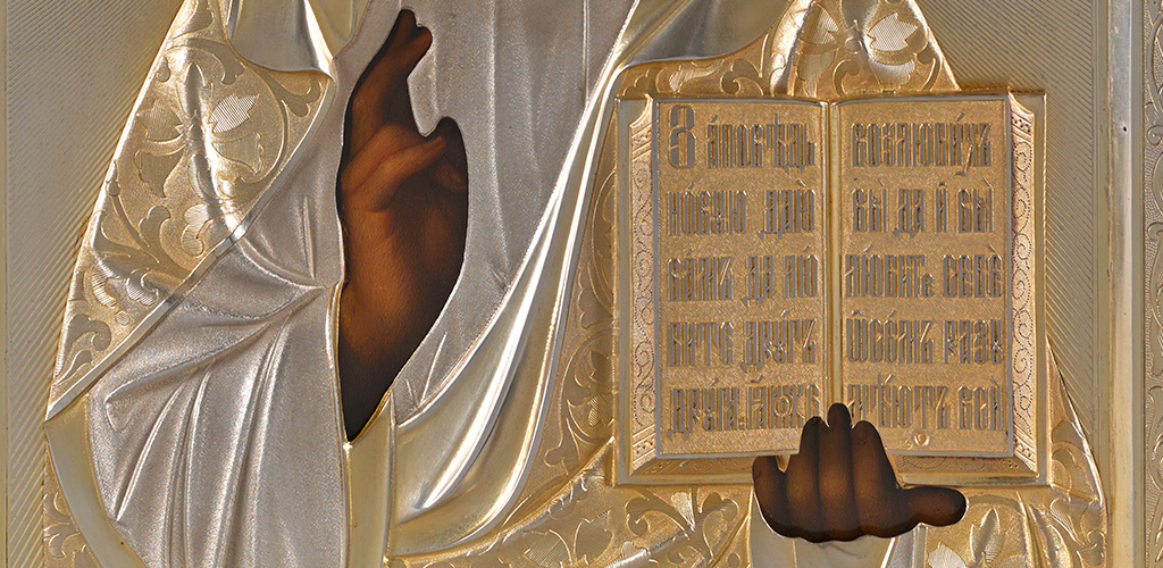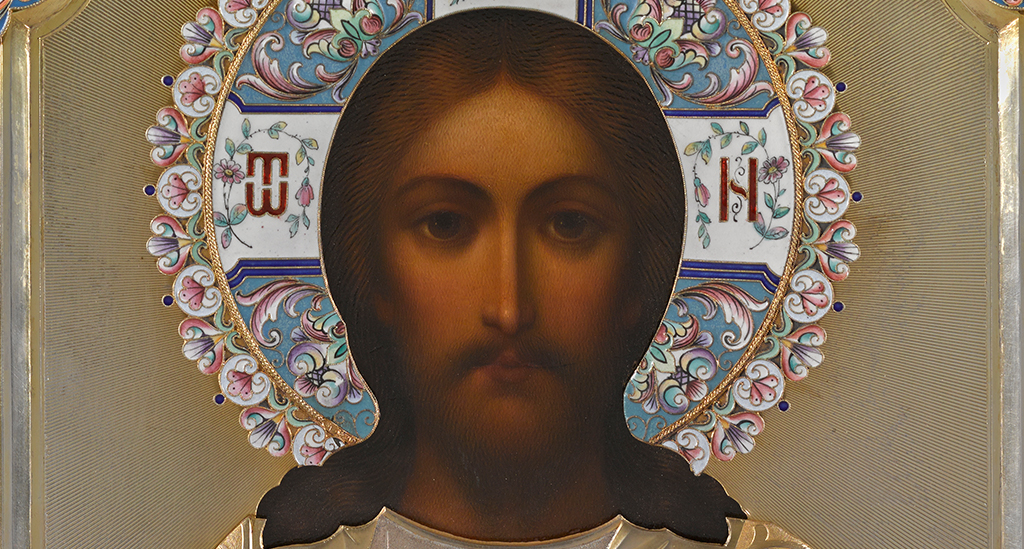A realistically painted icon encased in an engraved and repoussé silver riza with multicoloured cloisonné enamel, the halo is inscribed with three Greek letters Ѿ О Н (He who is). Christ is shown with a book of St. John’s Gospel open to the following passage: A new commandment I give unto you, That ye love one another; as I have loved you, that ye also love one another. By this everyone will know (John 13:34-35). The cartouche on the lower border contains an inscription in Russian: Christ Pantocrator.
The iconographic type of Pantocrator (Almighty or Omnipotent in Greek) shows Christ as the Lord of the Universe, co-equal and co-eternal to the Father. The iconography originates in Byzantine art and is known since the sixth century. The earliest known surviving example is the icon of Pantocrator from Saint Catherine’s Monastery in Sinai. Later on, gigantic images of the Pantocrator, represented half-length with a book of Gospels in his hand, can be seen on the mosaics and frescoes of Byzantine cupolas. In Russia, this iconography usually appeared in the Deisis Tier, the main part of the iconostasis, but could also be used for independent devotional images.













